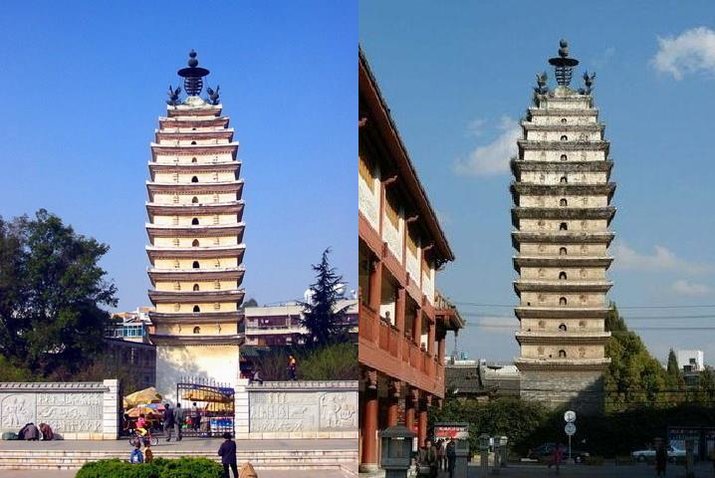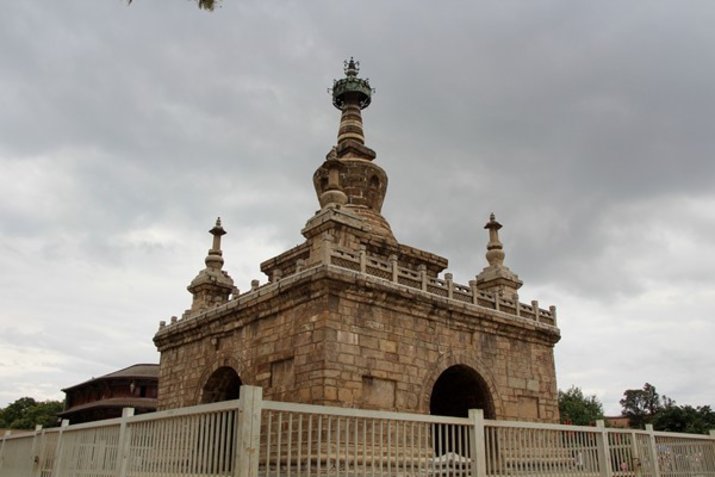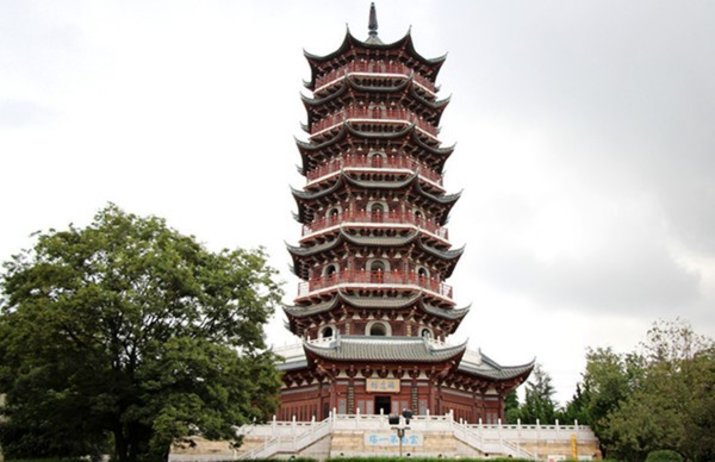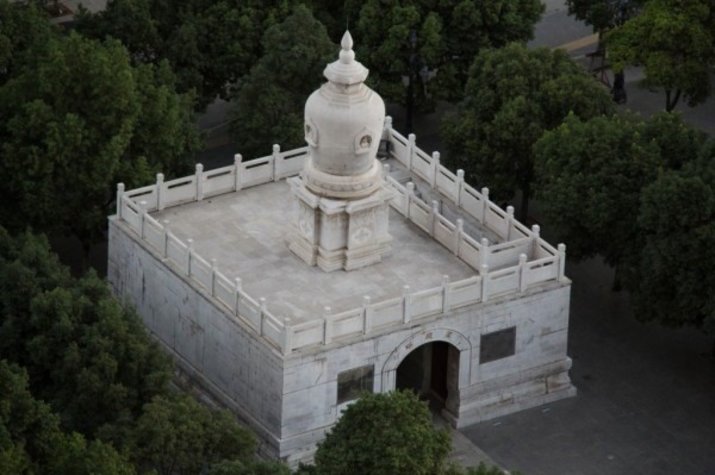Pagodas, mainly build with a religious background, can be found all over Asia. As one of the 24 "historic and cultural cities of China", also Kunming has a series of pagodas some of which visitors might not know in the city. We listed some below of which we think they are worth visiting.
The Dongsi and Xisi Pagodas

Located in Kunming downtown, the Dongsi (eastern, 40.5m high) and Xisi (western, 36m high) Pagodas were originally built in the Tang Dynasty (618-907) when Yunnan was in the reign of the so-called Nanzhao Kingdom (738-937). The two towers are a couple of hundred meters apart from each other and are connected by a pedestrian street with some historic sites.
Add: Dongsi and Shulin Street (connected by Sima Alley)
The Varja Pagoda (also known as Jingang Pagoda)

As the landmark of Guandu Old Town, the Jingang or Varja Pagoda was built in 1457. This well preserved pagoda tops others of its kind in China for its exquisite architectural skills, and of course is a symbol of the ancient civilization of Kunming.
Add: Guandu Old Town, 22 km south east of Kunming downtown
The Ruiying Pagoda

Located inside the Tanhua Temple which was first constructed in the Ming Dynasty (1368-1644) and got named due to a 300-year-old magnolia tree, the pagoda is a 7-storeyed tower which can be ascended and from where one can have a birds-eye view of the city.
Add: Tanhua Temple, Tanhua Road (just outside the eastern 2nd ring road)
The Twin Pagodas of Dade Temple

As part of the Dade Temple which doesn't exist anymore today, the two pagodas were built in the Ming Dynasty (1368-1644) as a copy of the Wild Geese Pagodas in Xi'an. Both 21 metres high, the dense-eaved pagodas are set up with niches on each storey to enshrine the Buddha. Surviving the vicissitudes of history, they have witnessed the development of Kunming. In 1983, the two pagodas were listed as the key cultural relics of Kunming.
Add: Huashandong Road, Kunming downtown
The White Pagoda

First built in the Yuan Dynasty (1279-1368), it is a Tibetan style Buddhist pagoda and historically symbolises the cultural exchange between the Tibetans and Han people. The original pagoda was named after the Wanqing Temple which was demolished in the Ming Dynasty (1368-1644). Due to its colour, it has been called the White Pagoda and Kunming has named the road beside it Baita Road (White Pagoda Road).
Add: Baita Road next to Zhenqing Taoist Temple
- 646 reads
- Like this







